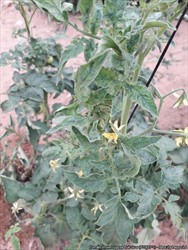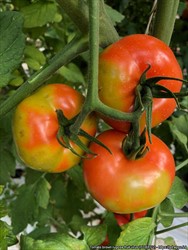- Narrow distribution within Asia, North America, Middle East, Europe. Not in Australia or Pacific island countries. Tomato and capsicum are hosts; no weeds reported.
- Severe economic impact (more in greenhouses than field), with 30-70% yield reduction for tomato. Leaves with mosaics, distortions; fruit deformed, brown or yellow marbling (coloured streaks) and wrinkled skin.
- Spread: seed, cuttings, contact between plants, on tools, hands, clothes. Survival in soil, water, plant debris, equipment. Not by insects, but by pollinating bees. Detected by ELISA and PCR.
- Biosecurity: high risk; rapid identification important to attempt eradication (several successes). Pathways for entry: seed, seedlings, cuttings, grafted plants, fruits. No resistant varieties. Regulate entry of seed and fruit from where ToBRFV exists.
- Biocontrol: none.
- Cultural control: hygiene: use reputable seed or treat (see full Fact Sheet), monitor, avoid contamination with purchased fruit, control visitors, distance nursery from fields, grow seedling in new potting mix, change clothes between visits to protected cropping and field visits, rogue plants with symptoms.
- Chemical control: not a suitable method.







